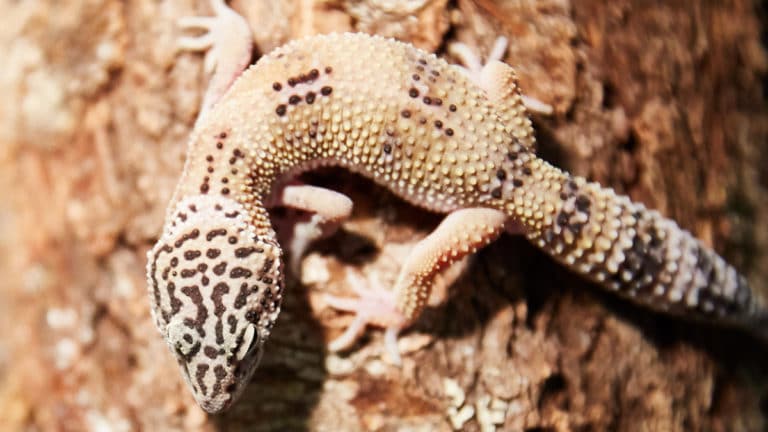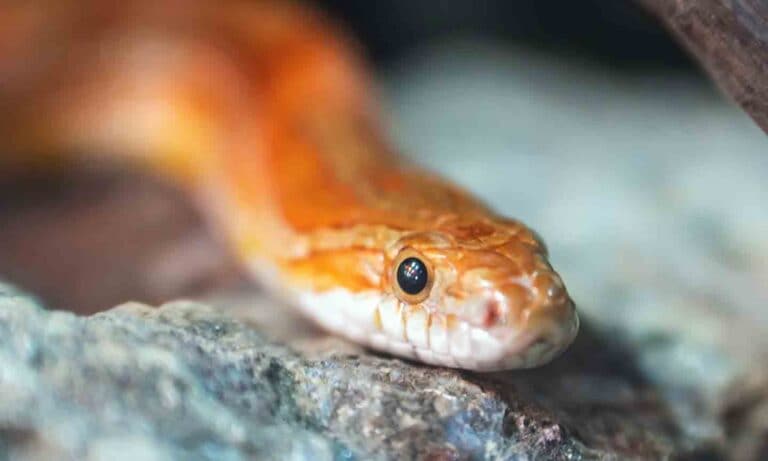In the wild, turtles live in everything from muddy swamps to crystal clear, spring-fed rivers. Knowing what species your pet turtle is and what type of body of water your turtle prefers helps tremendously.
However, no matter the species or the habitat, every pet turtle prefers a turtle tank with clean water. Clean water is essential for your pet turtle’s tank, especially since aquatic turtles spend most of their time in the water, and that means removing waste.
Make Haste to Clear Waste
Waste in your turtle tank setup comes from three main sources:
- Uneaten food
- Feces and urine
- Detritus (dead plants, rotting logs, dead cells/microorganisms)
All of these break down into the toxin ammonia. Ammonia is invisible to the naked eye, so you cannot tell how much is in the water just by looking. To test the ammonia, you would use a water test kit, which we will discuss later.
Once ammonia levels build up too high, it is lethal to most living organisms. You have two options to lower ammonia and waste levels: add a filter or perform a water change.
Some turtle enthusiasts opt for dump-and-fill turtle enclosures, which are enclosures without filters. Instead, they employ regular water changes (once every two to three days). But that could be very challenging, especially indoors. As a result, adding a water filter to the turtle tank setup is one of the best investments for most turtle owners.

Via Chewy Studios
Understanding Turtle Tank Filters and Filter Media
An aquarium or turtle tank filter is a rigid container filled with filter media, which is the term for any material used to trap debris in your aquarium and grow beneficial bacteria to break down waste. Water is pumped through the media to remove waste.
Most filters come prepackaged with their own filter media. Some, however, like a canister filter, come with baskets that can be filled with any filter media you choose. You’ll want to pack your turtle tank filters with as much media as they can handle without obstructing water flow.
Turtle tank filters house the good bacteria that break down waste. The larger your filter is, the more good bacteria it can grow, but the greater the flow rate is needed. This means a bigger filter can handle more turtles and a larger aquarium.
Your filter should have all of the following components:
- Mechanical filtration. This is a physical trap for gunk—like an air filter in your car. Usually, this is accomplished with a sponge or filter pad, such as the Marineland Magnum Bonded pad filter media.
- Biological filtration. Good bacteria that digest ammonia and biological waste are grown on media, like Marineland C-Series Canister Bio-Filter Balls filter media, Fluval Biomax Bio Rings filter media or filter pads. The more surface area your biological media has, the more good bacteria your filter can grow!
- Chemical filtration. These are substances, like activated charcoal, zeolite and resins, that absorb toxins and pollutants. Combination products, like Marineland Diamond Blend Carbon Ammonia Neutralizing Carbon filter media, include both. These often are considered “water polishers” and require frequent replacement.
- Pump (flow). The amount of water pumped through the filter is flow, measured in “gallons per hour” (gph). Flow is critical to oxygenate the water to keep good bacteria alive, to increase the rate toxins can be removed from the water and to prevent dead zones that trap dirty water.
Every hobbyist has his or her preference for filter media. Note: Mechanical filtration should come before the biological media, and chemical filtration should be last.
It’s important to note that filters alone can’t clean the turtle tank setup. Eventually, nitrates will build up and filters will get clogged with gunk, meaning you must clean your aquarium and the filter.
In an ideal world, this is necessary only every few weeks to months. Purchasing the best filter you can afford will help decrease your maintenance requirements.
Choosing a Turtle Tank Filter
There are five main types of turtle tank filters, each with pros and cons.
- Hang-on-Back Filters. These filters are popular for fish and are not recommended for turtles. Because their filtering capacity is very low, they are prone to dead spots in the water where waste can build up. They also require tanks to be filled to the top with water to function properly.
- Internal/Submersible Filters. These filters have a low filter capacity but allow for filtering of very shallow aquariums with low flow. These are recommended for small or even hatchling turtles. Because these filters go inside the turtle tank, they take up valuable swimming area, so products like the Tetrafauna Decorative ReptoFilter, which double as a resting/basking site, are best.
- Canister Filters. The Penn-Plax Cascade Aquarium canister filter is an ideal basic and advanced filter for most hobbyists. Canister filters usually are quiet, low maintenance and provide strong flow and filter capacity. You can load whatever filter media you like in most canister filter brands. They are compact and only the inlet and outlet are visible in the aquarium, which provides maximum swimming space.
- Sumps. These are essentially a second aquarium or reservoir placed under your turtle tank. In this reservoir, you can put filter media, plants, lights and heaters that the turtles would destroy otherwise. Planted sumps are popular, as the plants help remove nitrogenous waste in addition to the filter. Some keepers enjoy having this second enclosure, but they can be expensive. It also takes up a lot of space, and not everyone has the time to care for it.
- DIY. Things like 5-gallon buckets, pond filters and planter boxes can be converted into filters, as long as you understand the principles of filtration. You can buy water pumps, tubing and filter media individually to keep costs down. However, there is no user manual, and they don’t usually look very sleek for hobbyists who want the turtle tank to be a feature in their home.
When picking a filter, choose one with a flow rate of approximately four times the number of gallons of water being used. This should be enough circulation to help “push” debris and waste into the filter where it can be trapped and broken down by the filter media. It also helps oxygenate the water which is good for the beneficial bacteria. So, for a 50-gallon tank, a filter with at least 200 gph is ideal. If you can afford a bigger filter, go for it! Most filters come with a knob or a dial on the intake or outflow.
Whichever filter you choose, make sure to follow the instructions and guidelines provided by the manufacturer. It’s important to check that your pet turtle cannot get stuck in a filter inlet by the suction or else he could drown. Also, make sure that the outlet flow rate is not too high, or your pet turtle will struggle to swim against it.
On initial setup, it is recommended to use a bacteria starter fluid, like the API Quick Start aquarium water treatment, to establish the good bacteria inside your filter.
Water Changes and Filter Cleanings
To maintain your filter and water quality, regular water changes and filter cleanings are needed. A 25- to 50-percent water change once a week will go a long way to keeping your turtle tank clean.
The need for a complete water change and filter cleaning will be evident when debris begins to build up in the aquarium or the filter flow is reduced or slows to a trickle. Even then, regular cleanings every 2 to 3 months are needed at a minimum for most filter types.
Simply turn off your filter, remove the media, rinse everything with dechlorinated water and replace any media that is no longer viable. It is important to use dechlorinated water or old aquarium water to rinse the biological media to keep the beneficial bacteria alive. Change the tank water at the same time. You can dechlorinate water using a simple water additive in tap water, like the API Tap Water Conditioner.
Removing water with a siphon and a bucket is the traditional method. However, methods like the Python No Spill Clean and Fill aquarium maintenance system can make water changes almost completely automated.
When refilling the aquarium, use a water conditioner, like the Tetrafauna AquaSafe reptile water conditioner. This helps to remove any pollutants and chlorine from tap water.
After cleaning the filter, put it back together, and don’t forget to plug it in!
Water Checks
Water test kits are useful for monitoring pH and nitrogenous waste in your turtle tank. These include nitrates, nitrites and ammonia.
These kits are similar to pool test kits. Dip strips, like the Tetra EasyStrips 6-in-1 aquarium test strips, quickly can inform owners when toxin levels rise too high and a water change and filter cleaning are needed. Full kits, like the API Freshwater Aquarium master test kit, provide more accurate results but are slightly more involved.
Remember: The aquarium is not only your pet’s habitat, it also is his drinking bowl. Keeping water clean is the first step in keeping your pet turtle healthy and avoiding expensive vet bills.
By following these basic principles, your pet turtle should have a happy and healthy environment in which to flourish. And, as with anything, experiment with what works for you and your pet. Do what you feel works best for your lifestyle as well as your turtle’s.
Dr. James Liu grew up in California, obsessed with all things animals, especially reptiles. He graduated from UCLA in Conservation Biology and UC Davis School of Veterinary Medicine with a specialty in wildlife. He currently lives in New York and travels the world, working as the veterinarian and managing director for the Turtle Conservancy (@turtleconservancy). His articles and photography can be found in The Tortoise magazine, Reptiles magazine, LA Times, PENTA magazine, and on Chewy’s blog, BeChewy. Follow Dr. James Liu’s wildlife and turtle adventures on Instagram at @turtlesarentslow.
Featured Image: Via Chewy Studios
Share:





















